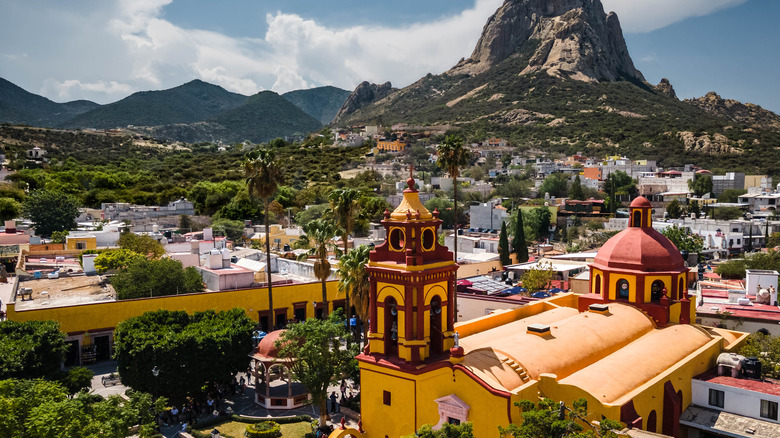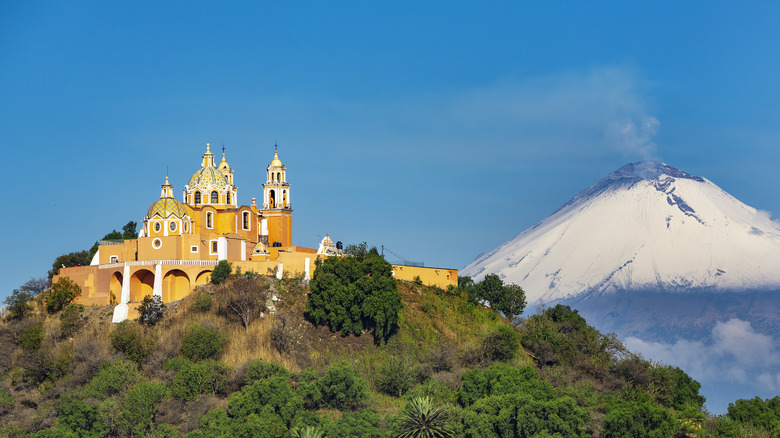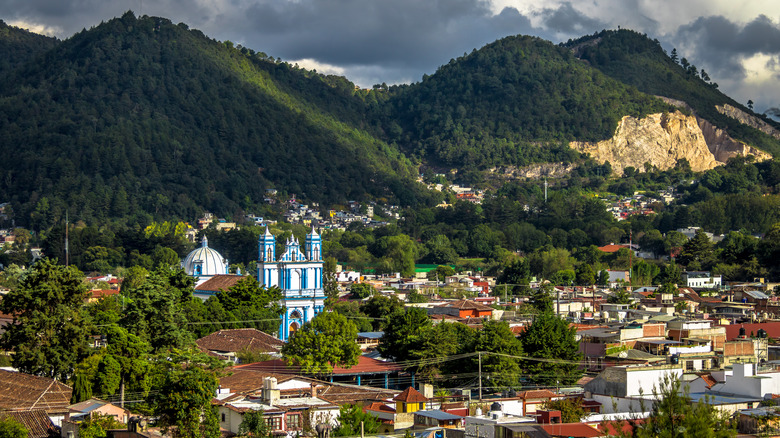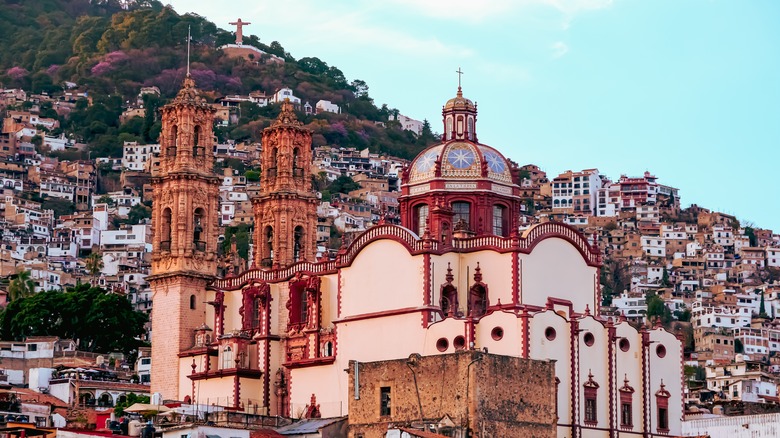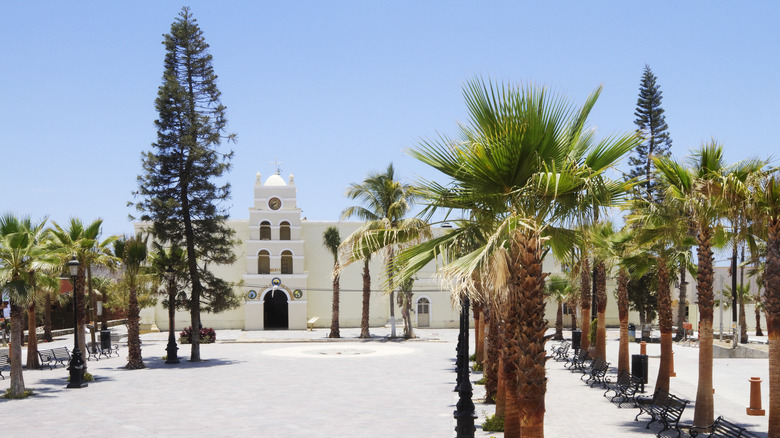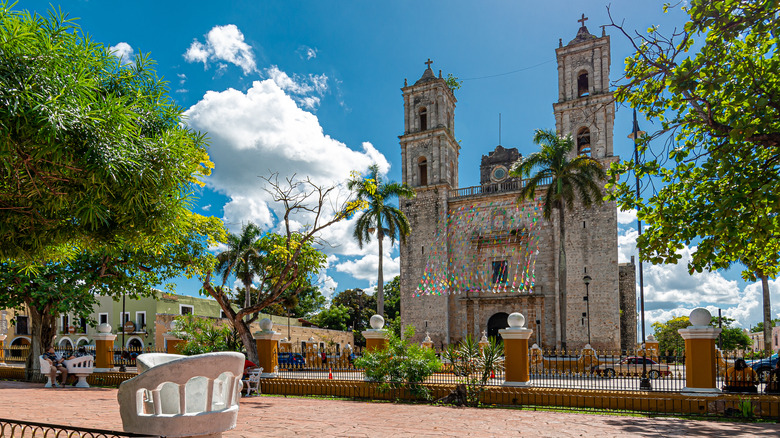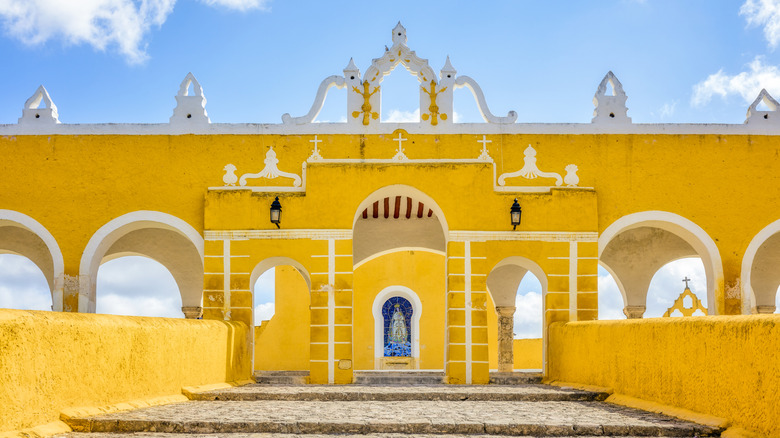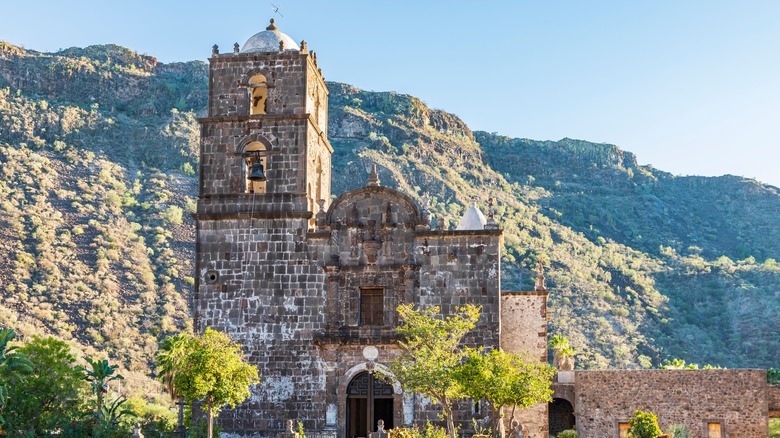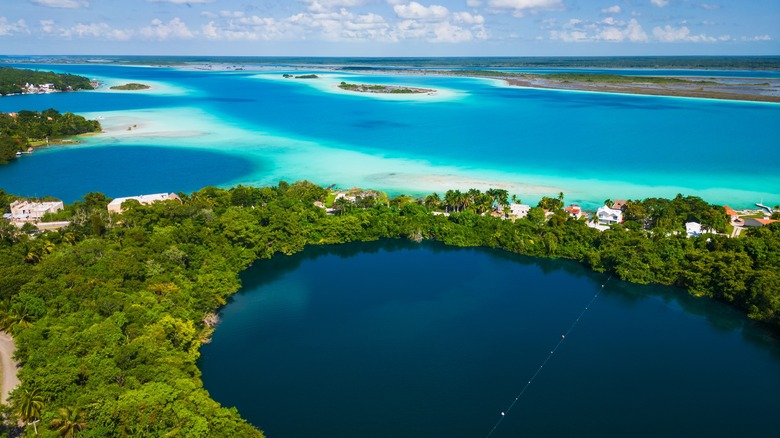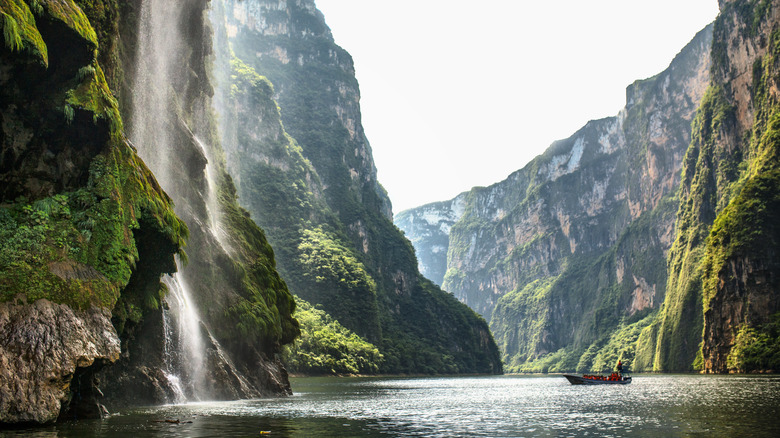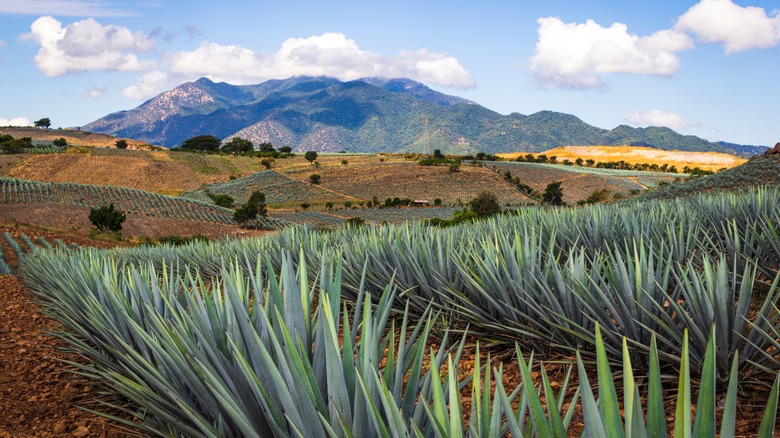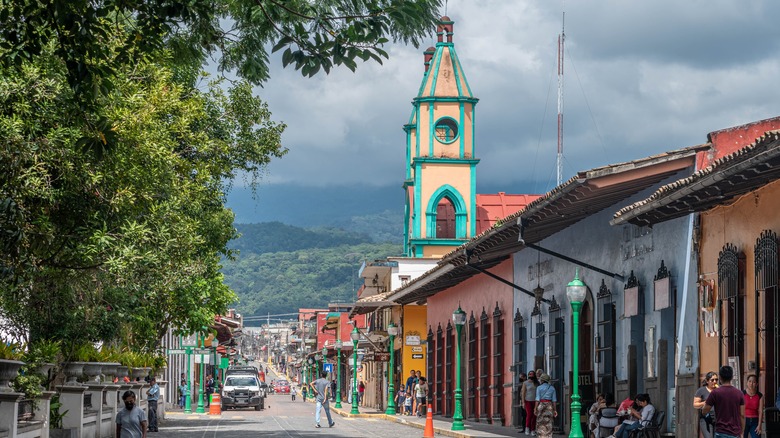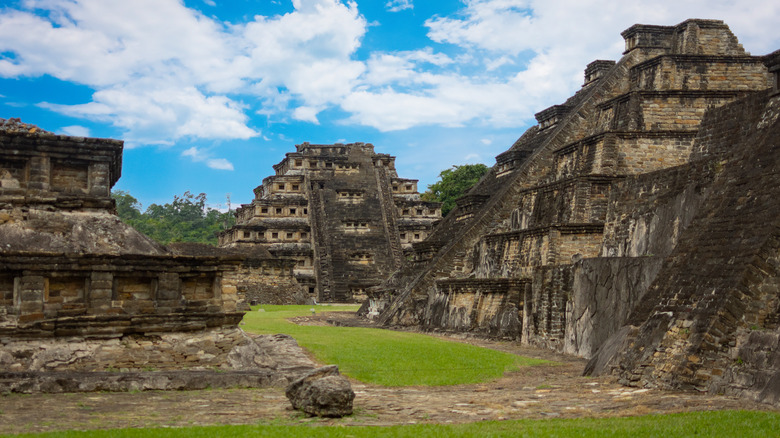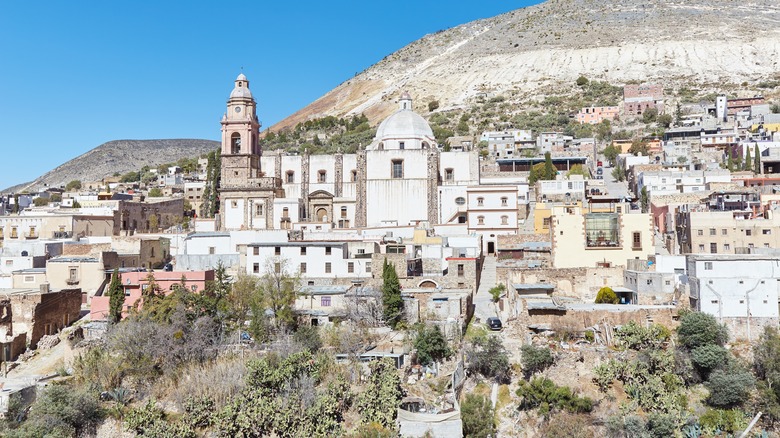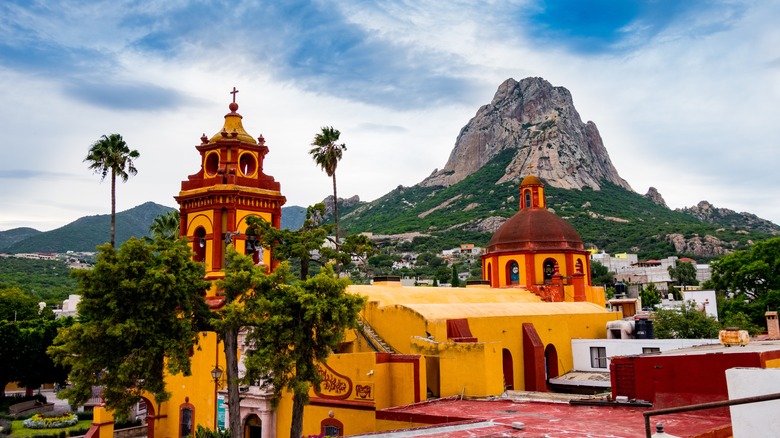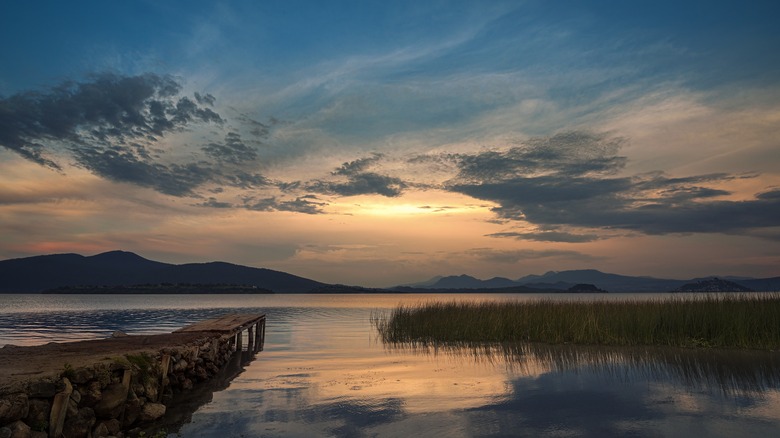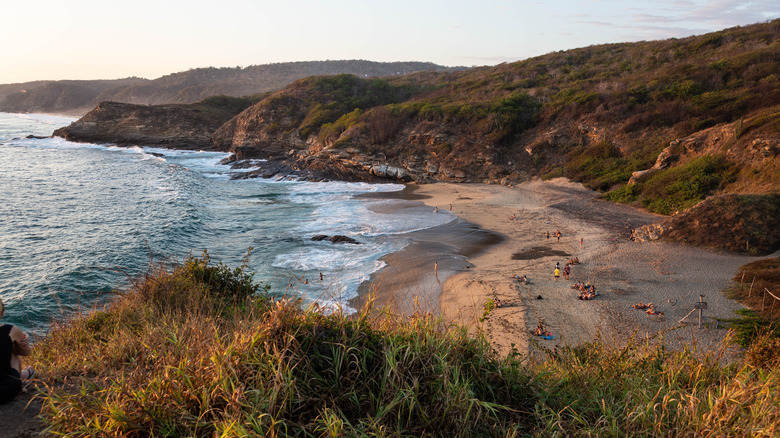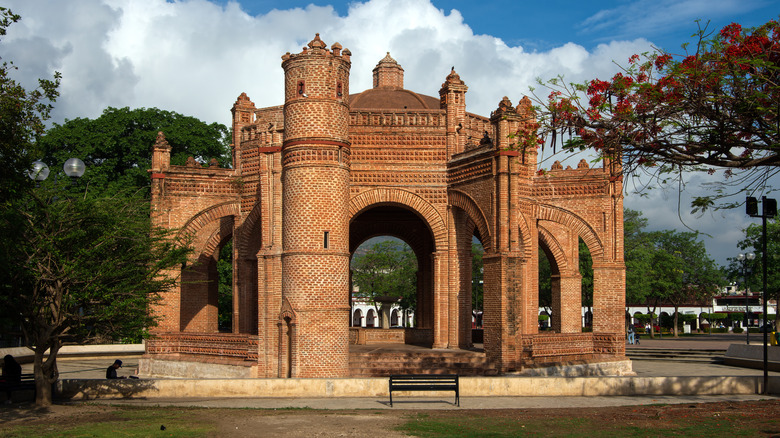The 16 Best Magic Towns In Mexico, According To Travelers
Whether you're craving an escape to a tropical oasis, a cacti and agave-filled desert landscape, or a charming and colorful historic town, Mexico has something for everyone. And if you're searching for a destination that has an extra dose of enchantment, well, then you're really in luck. Since 2001, the Mexican government has designated a number of destinations across the country as pueblos mágicos, or magic towns, thanks to their supposed "magical qualities." Simply put, these are towns that are especially beautiful, plus historically and culturally significant.
As of 2023, there are 177 towns that have been given this special status. While there's no doubt that they're all worth a spot on your bucket list, 177 is a bit of a daunting number, so we've taken it upon ourselves to narrow it down to the very best. We used thorough research to determine which ones are most worth visiting when it comes to beauty, historic, and cultural things to do, and overall experience according to past visitors.
Cholula, Puebla
Located just nine miles away from the city of Puebla, Cholula is one of the state's best known and most loved magic towns. At the heart of Cholula is Tlachihualtepetl, a pyramid that's said to have the largest base of any pyramid in the world. A breathtaking yellow church is situated right at the top — while it's a bit of a trek to reach, it offers stunning panoramic views of the city below, the nearby volcanoes, and of course, the pyramid. You can pay an entry fee to access the archaeological site, plus visit the Museo de Sitio de Cholula, which has a reproduction of the pyramid (since much of the pyramid is overgrown and covered by grass, the reproduction gives you a better sense of the pyramid's true scale). You can even walk through the pyramid's underground tunnels as well.
The nearby Museo Regional de Cholula has plenty of archaeological artifacts too, plus traditional art like talavera pottery, a pottery style that originated in Puebla, plus some more modern exhibits. Don't miss a walk through the Zocalo or the main square, and be sure to pass by another unique church, Templo de San Gabriel Arcángel. The Mercado Municipal de San Pedro Cholula is a must for those looking for shopping or affordable eateries.
San Cristóbal de las Casas, Chiapas
This awe-inspiring colonial-style city is filled with charm, from its cobblestone streets to its colorful buildings and surrounding mountains. Chiapas is home to one of the largest Indigenous populations in Mexico, so if you're looking to learn more about Indigenous culture, then San Cristóbal de las Casas is one of the best places to (respectfully) do it. Explore the town's main plaza, the yellow and red baroque-style church Catedral de San Cristóbal de las Casas, and the charming walkways, filled with restaurants and shopping. If you're up for a short climb, pay a visit to the hilltop Iglesia de San Cristobalito — if not, stop by the Iglesia de Guadalupe, which requires just 79 steps (compared to 280).
There are a number of interesting museums worth a visit, from the Amber Museum to the Mayan World Textile Center. If you're able to venture beyond the town itself, there's plenty more to see, from nearby Indigenous communities like Chamula, a self-governed Tzotzil Maya community, not to mention incredible nature like Cascadas El Chiflon, five waterfalls that flow into strikingly turquoise water.
Taxco, Guerrero
A walk through Taxco's cobblestone streets, lined with whitewashed buildings with red-tiled roofs really does feel magical. Despite being a small city, there's plenty to do here — for starters, walk through the main plaza and check out Santa Prisca Church, a decadent church with a gold-lined interior. Taxco also has its very own Christ the Redeemer statue, which can be reached by a two-hour hike or by opting for a taxi ride — in Taxco, your taxi ride will take place in a 1950s VW beetle. A visit here truly is a step back in time.
Explore the Cacahuamilpa National Park, the largest cave system in Mexico, and one of the largest in the world, and take a ride on the Teleférico de Taxco, a cable car stretching across the valley. A former silver mining town back in the 1700s, that legacy remains today, and there are plenty of silver stores and stalls around as well, not to mention the Museo de la Plateria, a museum where you can learn about the history of silver in Mexico. Casa Borda, a cultural center based in an 18th-century building, has a number of intriguing exhibits, as well as occasional performances. If you're seeking some nature, a visit to Pozas Azules blue spring pools is a magical experience.
Todos Santos, Baja California
This beachside desert oasis has become a haven for surfers, artists, or just anyone looking for a relaxing destination with a side of enchantment. The town itself is filled with plenty of beauty and charm, thanks to its colonial-style buildings, cobblestones, plentiful local shops and art galleries, and multi-colored papel picado. But, there's nearly endless gorgeous natural scenery as well.
Enjoy the stunning beach and Sierra de la Laguna mountain views by hiking Punta Lobos or around Playa Las Palmas, and either help release baby sea turtles into the ocean or go whale watching while here. Of course, some time at the beach is a requirement of visiting Todos Santos. Playa Pescadero and Playa Los Cerritos are both popular options, while the slightly farther away Playa La Pastora is ideal for those seeking more seclusion (and the best surfing).
Valladolid, Yucatán
Nestled in the Yucatán peninsula, not far from the well-known archeological site Chichen Itza and far less touristy than nearby destinations like Tulum or Cancun, is Valladolid. One of the safest destinations in Mexico, this colorful colonial city has plenty of charm, from its multi-colored buildings (particularly on the street Calzada de los Frailes), to its cobblestone streets, not to mention its centuries-old cathedral, and main square. Of course, Chichen Itza, one of the new seven wonders of the world, is a must, as is at least one stop at a nearby cenote.
As a city with a large Mayan population, you're likely to see plenty of locals here dressed in traditional Maya clothing, as well as restaurants serving up local dishes. Street food is abundant (and delicious) here, so be sure to enjoy some typical Yucatán dishes. Other worthwhile day trips include a stop in the neighboring town Uayama, where there's an extraordinarily beautiful and unique church, and Izamal, another magic town known as the "yellow city," that's filled with endless picturesque views.
Izamal, Yucatán
This magical city is another must when visiting the Yucatán. It's known as the "yellow city," so as you can imagine, this unique town is absolutely decked out in yellow. If you're wondering why, well, there's no clear answer, but one theory goes back to its colonial history. It was painted yellow in 1993 in honor of the pope visiting. Another theory points to the city's roots as a Mayan community, and that yellow is an ode to Kinich Kak Mo, the sun god.
While here, enjoy exploring Izamal's downtown, and check out the shops, galleries, and markets. The Convento de San Antonio de Padua, constructed in 1561 over the ruins of a Mayan temple, is one of the oldest Catholic monasteries in the Americas, and is well worth a stop. The Izamal Cultural Center, a museum filled with traditional Yucatán materials, is also a great place to visit. Izamal is also home to a number of Maya pyramids and archeological sites, including Kinich Kakmó Pyramid, which is free to visit, along with Pyramid Izamatul.
Loreto, Baja California
This laid-back oceanside town is Baja California's best-kept-secret. With colonial-style architecture and cobblestone streets, plus stunning views of the Sea of Cortez, Loreto is the perfect choice for anyone looking for a relaxing vacation in a historic and cultural town. While in Loreto, be sure to visit the historic Loreto Mission as well as the accompanying museum, and check out the waterfront Malecon.
The area around Loreto is also incredibly stunning, and it's well-worth going on excursions like visiting the volcanic Isla Coronado (a great place for snorkeling, and one of Mexico's best beaches), and taking a boat tour to the Bay of Conception, or to Danzante Bay, areas known for their picturesque scenery. Depending on when you visit and your luck, you may even see some whales and whale sharks as well. For scenic mountain views, head to Misión San Francisco Javier de Viggé-Biaundó — there's plenty of hiking in the nearby mountains as well.
Bacalar, Quintana Roo
If you're looking to spend some time in paradise, then look no further than Bacalar. Known for the Bacalar Lagoon, nicknamed the "lagoon of seven colors" due to its vibrant multi-colored hues caused by the various depths of water (and sometimes even referred to as the "Maldives of Mexico"), Bacalar is one of the most postcard-worthy destinations in the Yucatán, while still managing to stay under-the-radar. The best way to experience Bacalar's magic is by taking a boat tour around the lagoon, stopping at mesmerizing sites like the Pirates' Channel, Bird Island, and picture-perfect cenotes.
Also be sure to visit Los Rapidos, the ultimate spot for relaxing lakeside, kayaking, or just getting in the water and letting the current carry you downstream. History buffs should also pay a visit to the Kohunlich Mayan Ruins and a fort. Come here to disconnect and unplug (WiFi is notoriously spotty), and enjoy all that this magic town has to offer.
Chiapa de Corzo, Chiapas
Chiapa de Corzo is one of Mexico's oldest settlements that's still inhabited, so you can be sure that this city is rich with culture and history. With a 16th-century Moorish-style fountain, and the red and white Templo de San Jacinto, the architecture here is a highlight. If looking to learn more about the town's culture, stop by the Marimba Museum, all about an instrument known as Chiapa's ancestral voice, and the Lacquer Museum, which features hundreds of lacquered pieces, an artistic style unique to Chiapas. As an important site for the Zoque, an Indigenous group, if you visit during certain times of year, you may even be able to see traditional Parachicos dancers, which is a truly special experience to witness.
The surrounding nature is also unparalleled, especially thanks to Sumidero Canyon. This gorgeous ecotourism destination is ideal for hiking, birdwatching, and kayaking. The surrounding jungle scenery doesn't hurt, either.
Tequila, Jalisco
In order for a spirit to be considered tequila, it has to come from one of five states in Mexico: Guanajuato, Michoacan, Nayarit, Tamaulipas, or Jalisco. The majority comes from Jalisco, where you can find Tequila, a small town where there's an abundance of agave fields and distilleries. The oldest distillery in the world, La Rojeña, is here, which produces one of the most well-known types of tequila — Jose Cuervo, but there are plenty to choose from.
Apart from tequila tasting, visit the Museo de los Abuelos, Museo Nacional De Tequila, and Museo La Cofradía, and once you've tired of tequila-related activities, enjoy walking around the town. The town itself is quaint and picturesque, with a cute main plaza and markets. Outdoorsy travelers should certainly trek to the Blue Waterfalls (or Los Azules), the La Toma Canyon, or the nearby volcano, for some spectacular nature.
Coatepec, Veracruz
From its surrounding cloud forests to its colonial buildings, there's much to love in this quiet town that was once a sacred site for the Aztecs. Coatepec is not only a colorful and quaint town tucked away in the mountains of Veracruz, but it's also Mexico's "coffee capital." With its own local specialties, an abundance of cafes, coffee bars, and even an annual coffee festival, coffee lovers shouldn't skip a stop here. "The aroma of roasting coffee is everywhere," said one past visitor on Tripadvisor. "One trip here was not enough."
The best way to experience Coatepec's coffee scene is by taking a tasting tour to stopping at the Coffee Museum. And when you've reached your caffeine max, pay a visit to the orchid garden, the gorgeous gothic-style Nuestra Señora de Guadalupe Church, and the red and yellow San Jerónimo Church. For an amazing look at Coatepec from above, hike to the Cerro de las Culebras.
Papantla, Veracruz
Papantla is rich in Totonac traditions, and one of its most iconic examples is with the "Danza de los Voladores" or "Dance of the Flyers" ritual. As flute and drum music plays, dancers swing from the top of a large pole cut from the forest. Meant to show respect and harmony for nature, while expressing the community's worldview and inviting prosperity, the ritual is considered an Intangible Cultural Heritage by UNESCO.
One of Papantla's other most notable experiences include a trip to the nearby El Tajin, one of Mexico's most impressive archaeological sites for Maya ruins. This series of ancient pyramids date back to the 10th and 11th centuries B.C.E., and is a must when visiting the area. If you're looking to venture further to a relaxed beach town, you can even go to Tecolutla, or Tuxpam.
Real de Catorce, San Luis Potosí
If you're looking for a truly unique destination steeped in history, Real de Catorce is certainly a top contender. This former silver mining site is considered a ghost town — although around a thousand people do live here — because its population dropped dramatically when the price of silver declined. It's also an important spiritual site for the Huicho, some of whom will embark on an annual pilgrimage to some of the area's numerous sacred sites.
Unlike many other pueblos mágicos that employ vibrant colors for their buildings, Real de Catorce appears more faded, seemingly matching its architecture to the surrounding desert landscape. Spend time wandering around the town and exploring. While here, visitors should hike up Cerro El Quemado, a sacred spot for the Huichols, visit the Casa de Moneda museum and former mint, and see ruins from the town's heyday in the mid-1800s. There's also an impressive church, the Templo de la Purísima Concepción.
Peña de Bernal, Querétaro
This magic mountain town is known as the home of Indigenous Otomí-Chichimecas people, and as spiritual sanctuary for Indigenous communities and as a pilgrimage site. But perhaps its most famous claim to fame is its massive mountain, Peña de Bernal. It's one of the world's largest monoliths, and is an eight-million-year-old UNESCO World Heritage Site — you'll need rock-climbing equipment to get to the very top, but it's worth getting as high as you can for surreal views below.
Within the town, there are plenty of beautiful streets to wander through, particularly Calle Hidalgo, which is home to a number of colorful buildings while offering a picturesque view of the mountain. You'll also want to stop at the Museo de La Máscara, which has 300 masks primarily created by a local artist and made with wood or cactus. Just a few miles away, you can find Ruta de Vino y Queso, Mexico's best destination for wine and cheese.
Pátzcuaro, Michoacán
This enchanting colonial village was one of the first pueblo mágicos, and once you've visited, there's no question why. Pátzcuaro is filled with charm and culture, with its blend of colonial and Indigenous influences. While it's otherwise quiet, this town is known for having one of the best Day of the Dead celebrations, and typically becomes crowded this time of year.
Walking around its vibrant plaza will lead you to plenty of eateries and artisan shops — Pátzcuaro is particularly known for its colorful textiles. About two miles away, you can see the serene Lake Patzcuaro, which is home to the island, Janitzio, and the Purépecha people. Here, you can visit the impressive José María Morelos statue, who is recognized for his role in Mexico's independence, as well as try one of the local eateries. As an island recognized for its fishing, you'll want to try the main local dish: pescado blanco, or whitefish.
Mazunte, Oaxaca
This underrated coastal paradise is the ultimate destination for watching sunsets, relaxing at the beach, and just taking things at a slower pace. The main drag in Mazunte is Calle Rinconcito, where you'll find most restaurants and shops. Of its four beaches, Playa Rinconcito is the most popular. Playa Mermejita, however, is a must for sunsets (also be sure to spend at least one sunset at Punta Cometa).
While here, you can pay a visit to a turtle sanctuary, and if you visit from November to March, you'll definitely want to go whale, dolphin, or tortoise spotting. Mazunte is also a hub for spiritual retreats, and has earned itself a reputation as a "hippie town" in Oaxaca. So with that said, there are plenty of opportunities to partake in one of the town's many wellness activities or events, whether it's a yoga class or getting a massage at Luz del Sol Centro Holístico.
Methodology
Mexico has no shortage of magical towns, so we made sure to use plenty of research to ensure we're offering the best possible recommendations. We used lots of travel blogs, Tripadvisor reviews, and destination sites to narrow down our selections, and verify our information. We also made sure that we offered a wide range of selections, with a diversity of landscapes, cultural experiences, and regions of Mexico.
